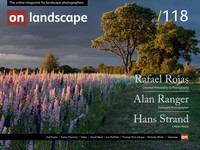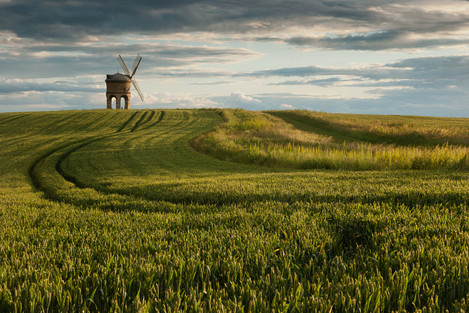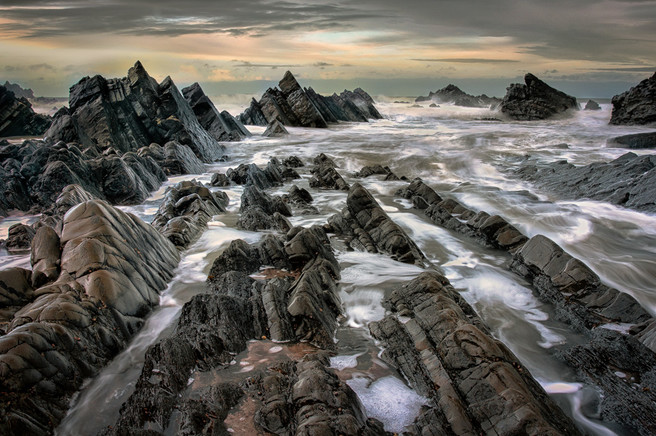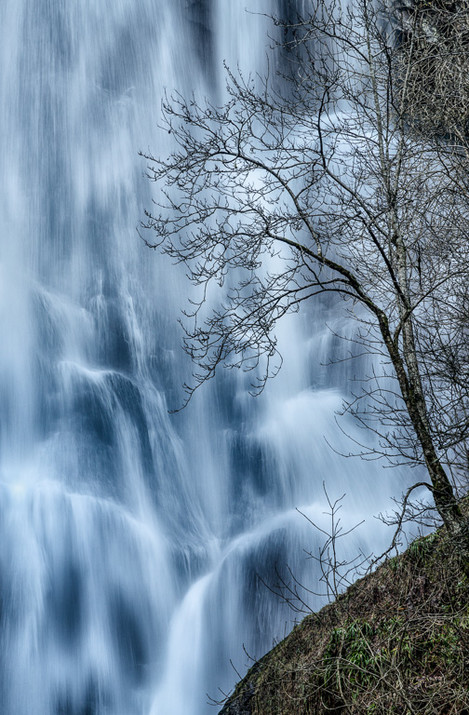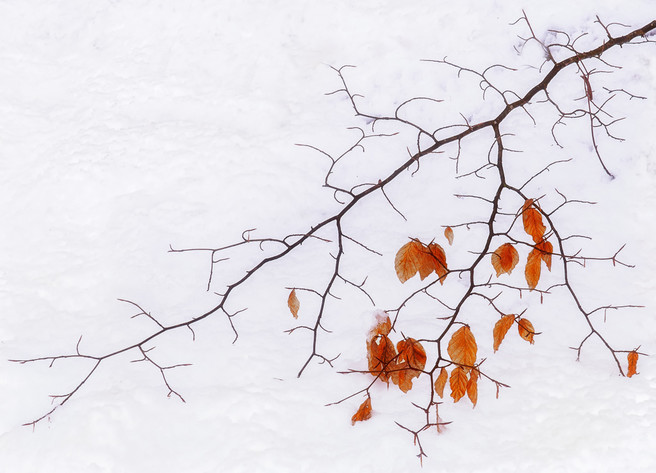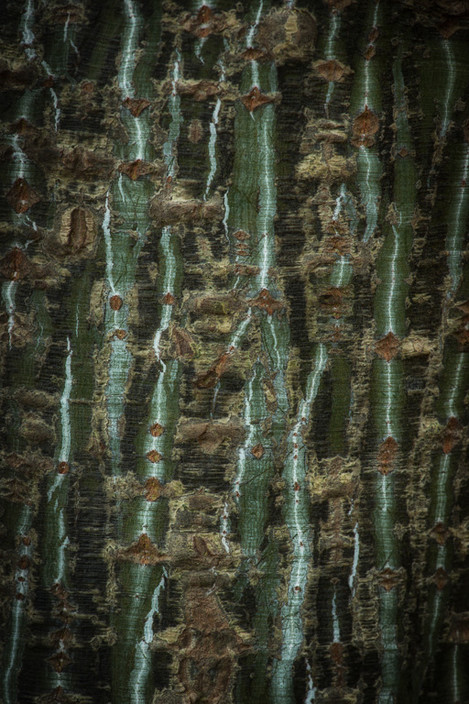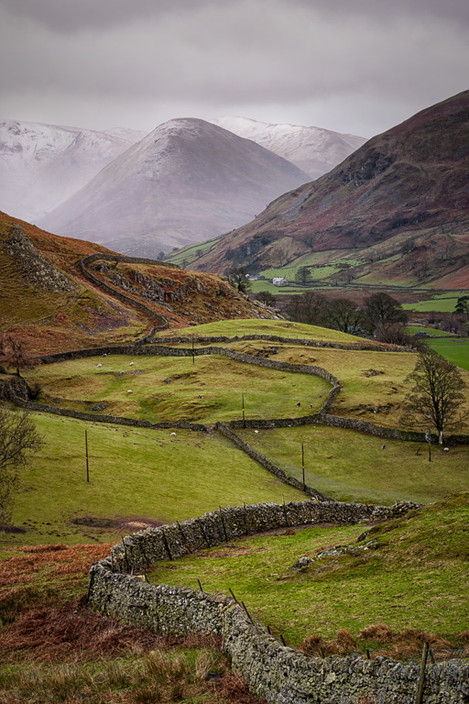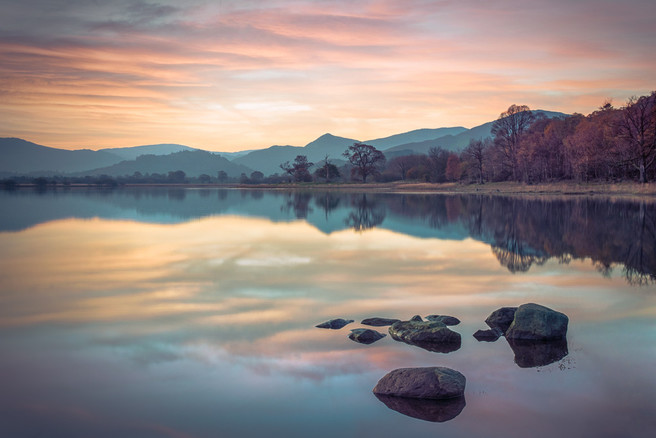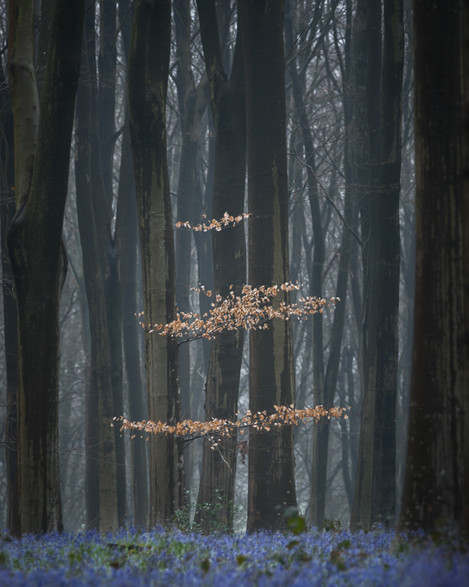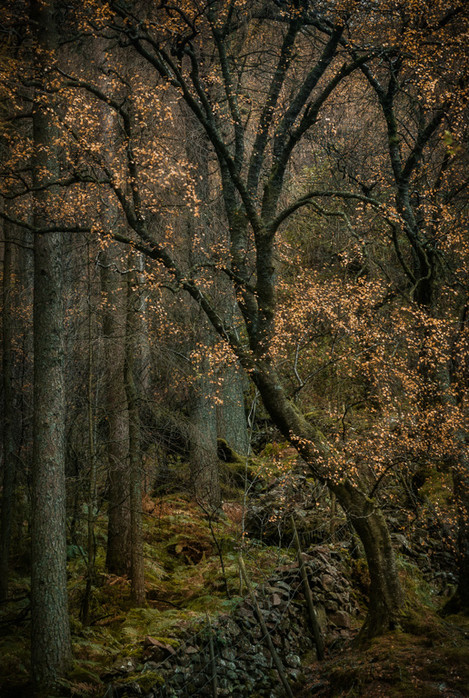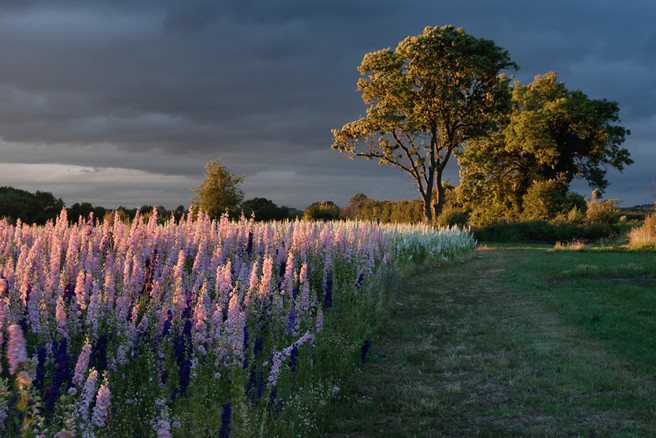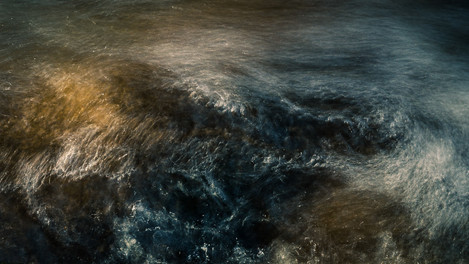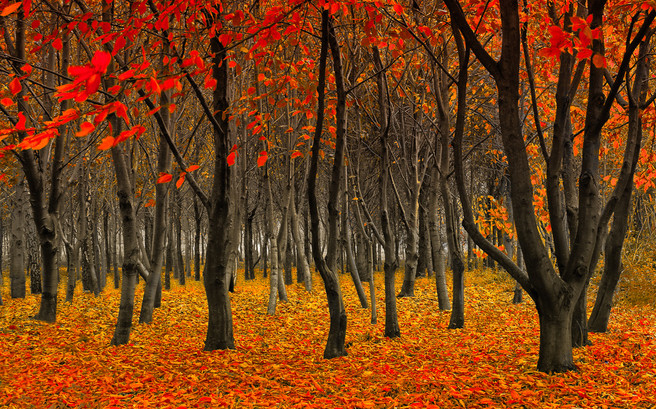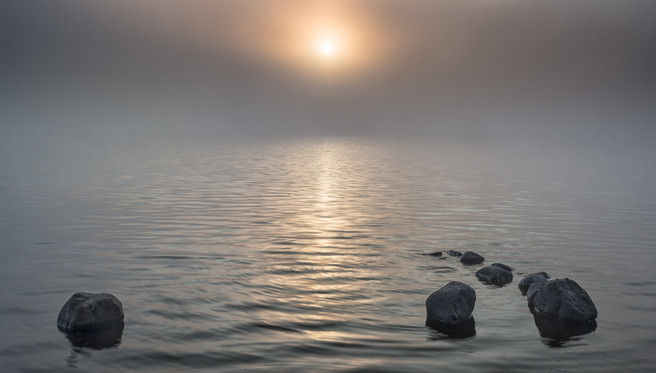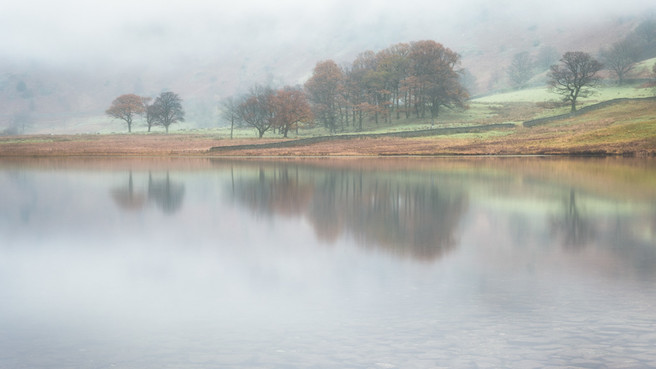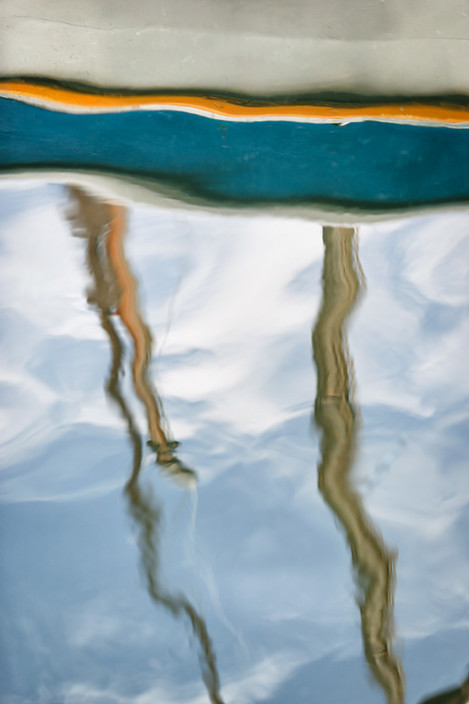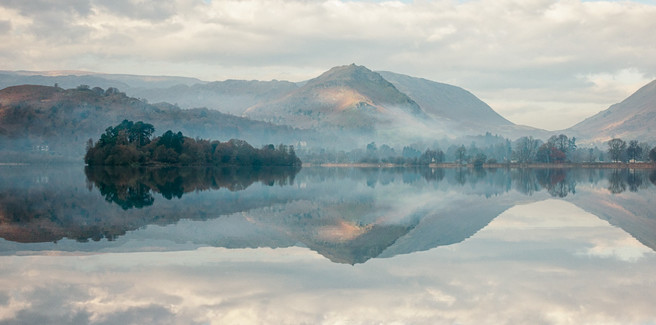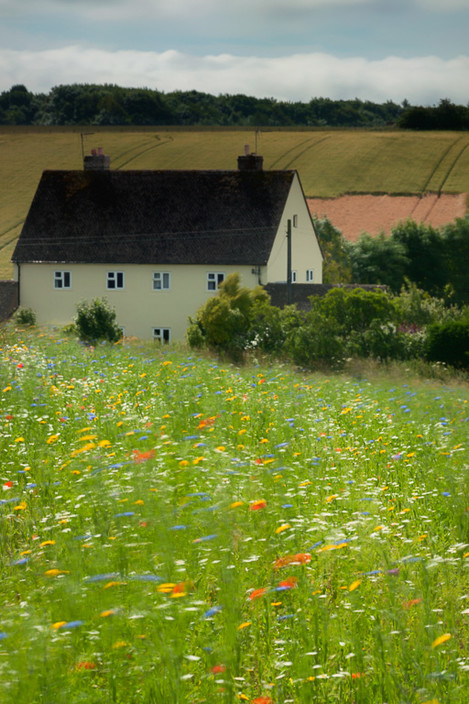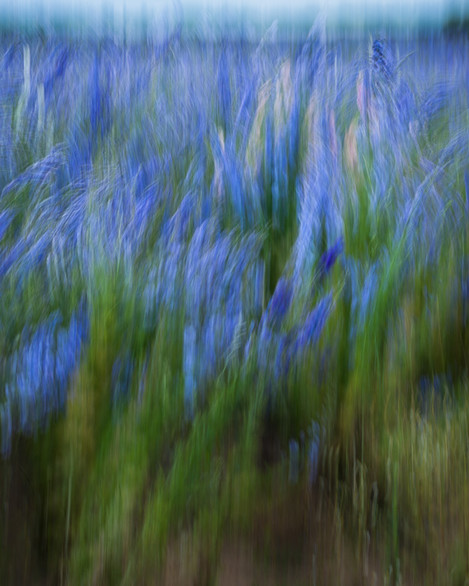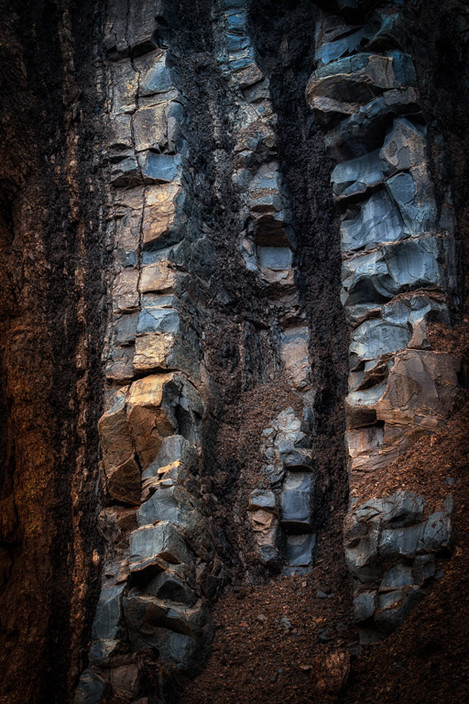Featured Photographer

Alan Ranger
Alan’s photography work is not merely a snapshot of what we see; it mirrors how we feel. A glance at his landscape photography illustrates this concept - capturing the energy of the land and depicting the emotion of that specific moment in time. He uses the camera to express the excitement of life; this is not done through imitation, but by pulling together strands of creative thought and weaving them into masterful reflections of feeling and insight.
I saw Alan Ranger's blog post about photographic journeys and his own personal journey that culminated with some one to one tuition with David Ward and wanted to find out a little more about him. In between his corporate work and leading his own tours, Alan answered a few of our usual questions.
Can you tell me a little about your education, childhood passions, early exposure to photography and vocation?
Tim, you ask the most awkward questions: So I will give you an honest response though I doubt it will be of much interest to your readers.
Education wise, well that’s pretty easy and “simple” in that I didn’t really fulfil it academically. I was too busy and interested in the political struggle going on in the decade of Thatcher to care much about education or the established pathways, so easily and quickly dropped out at the age of 15.
I opted for an education from working and living life, concentrating my thoughts and efforts on the things that mattered to me in that era. My passions during the 80’s were similar to many of my generation.
We were highly politicised by events going on in the world like the anti-apartheid movement, the strike of the Miners, followed by those in Wapping and the dockers and then the introduction of the Poll Tax among the many other struggles that we felt a sense of injustice about and disconnection from the establishment.
That upbringing probably had a deeper impact on my visual references than anything since. I think, in that period, I started to understand how an image could tell a story on one hand but also deny the viewer of context on another.
That’s not to suggest outright that photographs are a deception but I quickly learnt that an image could depict accurately, or not, a situation that I was witness to, could be portrayed differently to how I perceived events and experienced emotions.
That “mind-set” set me on an early path of being fairly rebellious but also tenacious and determined to challenge the “norms” and accepted views but also to strive for something better not just for me but for society generally.
I cannot say that my early career and first job in accountancy was a natural step in that direction but it led me onto roles in business transformation, change management consultancy and many contracts working with blue chip and medium-sized organisations that trusted me enough to hire my challenging mind to help implement change.
My photography started with wanting to take home photographic memories from travelling in South America – following on from that, and all the total failures I had managed to create, I decided I wanted to learn how to use the camera more proficiently so I could portray more of the feelings I experienced rather than just having visual references.
What are you most proud of in your photography?
That I have now reached a stage where I don’t question my ability/competency so much – don’t be get wrong, I am not saying that like most photographers there are not dips in my mojo at times or that I don’t make a picture that I later question myself about.
However, in the main I do not have to think too much about camera settings, exposure and so on – the technical side is now a bit like autopilot and my energy and concentration pretty much all goes into the design, subject, narrative and light to create something that reflects my interpretation.
In addition to that, the decision to leave the corporate world of work and make photography my a full-time profession was a big decision at the time. Having established my photography business, I am proud that three years on I am still doing it, loving it (most of the time) and still have an appetite and the resilience to keep expanding the tuition services I provide to support an evolving client base.
In most photographers lives there are 'epiphanic’ moments where things become clear, or new directions are formed. What were your two main moments and how did they change your photography?
Well I guess by the fact that it did not take me very long to think about this suggests that they were ‘epiphanic’ or I do not know what that word means!
There were in fact three such moments for me in life. The first one signified the biggest change in life, not just in circumstances but more importantly outlook and perspective. Having been diagnosed with cancer at the age of 27, I went through a very tough few years and faced some enormous hurdles that I had to overcome. Cancer, sadly, is common so I know this will resonate with many who have been touched with directly and indirectly, it really did change my perspective and sense of purpose in life.
At 30, I wasn’t sure of the direction I wanted to go in but knew I wanted to make some big changes. Travelling and experiencing different cultures and continents was a big part of that and it led me into photography so I could say I was blessed in that sense and was able to use it positively.
I also believe it had profound and deep effect on the images I’ve made since then. I am frequently told there is often a serenity about them and on some images (particularly the bark study) a real sense of macabre to them.
The second 'epiphanic’ moment was the realisation that the camera really was just a recording device and to “make” a photo that I felt proud of. I not only needed to master camera operation but I also needed to acquire the skills and experience to be able to process images too.
Like many of my beginner clients, I initially had the perception that the image came out the camera as the finished article and I just did not own or have the right stuff to make that magic happen.
I could not afford the latest and greatest anyway, so I was persuaded to learn how to use the digital darkroom and then accepted that this was part of the workflow for photography.
At that point, I do not think I can honestly say that I had made an image in the previous year that I was happy with, or had created an image for me rather than marketing one or leading a workshop demonstrating a shot to a client.
Frustrated by this I chatted to David Ward to discuss how I could get my own mojo back and start producing work again that engaged me and excited me.
After several Skype sessions with him looking at some of my historic work, I latched onto an idea for a new body of work. The seed of which had actually been sewn a couple years back on some early attempts to shoot tree bark and rock formations.
We did not agree any specific brief for the work other than that I needed to make time in my diary for my own photography and also that I should try and break the workflow that was common to me from running so many workshop events.
David suggested, and then helped me source a film camera, to help with this aim. So off I went with a Bronica ETRSi, a roll of film and with a little in trepidation but also excitement about totally getting outside my comfort zone.
That experience returned me back to the early days of my photography experience and that feeling of “not sure” but the sense of “isn’t this great fun” kick-started a period where I felt rejuvenated and creative again.
Has using film and a film camera surprised you in any way?
At this point Tim this question is a little harder to give a definitive response too. Partly because I haven’t made enough time to get out on my own with the film camera to experiment, enjoy and assess how its working for me.
My initial experiences informed me that it definitely slowed me down to spend even longer than usual considering every aspect of a shot but then I have never been a rapid shooter anyway.
The gear was considerably lighter so that was a positive but on the negative side (excuse the pun) the cost of developing/scanning the negs is also prohibitive and I have yet to feel motivated to buy all the gear to do it myself.
So whilst I haven’t abandoned the idea of using the medium format more regularly I haven’t yet found the burning desire to make it happen with any frequency and consistency.
Tell me about why you love landscape photography?
The landscape is where I fell in love with photography. Therefore, for me the landscapes came long before photography did. They were my weekend retreats, away from the world of corporate work and chance to unwind, destress and ground myself.
Being in the outdoors has always been a passion for me, even as a child I would go fishing for, as many, hours (and my parents) would allow. Just sitting there observing nature, quietly contemplating or even thinking about nothing felt very natural to me.
I remember on my return my parents would always ask me how my fishing trip went and I’d always reply “amazing, brilliant and so on” they naturally followed up with, “great what did you catch?” and I more often than not happily replied “Nothing!”
That was the point, even then, it didn’t matter to me if I caught fish or not, I didn’t feel any pressure to catch whilst others around me were, and to be honest I was happy just relaxing and probably didn’t pay enough attention to what I was doing to ever increase my chances of the big catch!
Maybe this early lesson/approach has carried through to my photography adventures too. Most of the time I am just content to be there and experience things and if I make a good photo then that’s a bonus, but I certainly don’t go out thinking right today I will make a masterpiece!
What is, for you, the appeal of landscape photography? What impact has it had on your life?
My inspiration simply comes from the natural world, particularly how the light plays on land and sea. The seasons, weather, time of day all play a part in how we experience the outdoors. I hope my photography reflects my own interpretation of these scenes and evokes the emotional connection for others that I feel when making them.
In terms of impact then the opportunity to be out regularly enjoying the landscape is of course wonderful. Even in bad weather and at times bitter conditions, it makes me feel rejuvenated. (Once I am back in the warmth with a pint in my hand and reflecting on the outing.)
To be able to turn your passion and love into a job is of course precarious and I know many have done so and then lost their appetite for the thing they loved most. Fortunately I haven’t experienced that enough yet and continue to feel inspired by landscape locations and sharing those and my experience with clients.
Could you tell us a little about the cameras and lenses you typically take on a trip and how they affect your photography.
I have been a Sony shooter since 2001. It wasn’t an educated choice by any means, more a case of what felt comfortable in my hands and head rather than doing any research or listening to the endless diatribe from Nikon and Canon shooters who felt the need to justify their purchasing decisions.
Don’t get me wrong, I don’t have any issue or indeed preference to camera makes, I just get bored with the boasts and counter boasts from photographers who spend 90% of their time talking about their gear and not the reason and thinking behind their image.
Currently I own a Sony A900 and A99. I actually use the A900 more often than not as feel the result is richer than the A99 though in terms of operation the A99 is much easier to execute. Lens wise I own Carl Zeiss 24-70 and 16-35 both F2.8 that are both great lenses.
In addition, and my go to lens for the majority of shots, is the Sony 70-200 F2.8. Why is it the lens I would take out without exception? It simply gives me the ability to isolate my subjects and tighten my compositions, so works in the majority of situations for me.
What sort of post processing do you undertake on your pictures? Give me an idea of your workflow..
My workflow is probably standard. I import directly into Lightroom, make the majority of adjustments in Lightroom and generally that’s it. If I want to create some additional effects or convert to mono then I use the Nik suite.
I encourage others to avoid the one click effects treatment, as believe your image should reflect your own interpretation and final output rather than look like it is computer manufactured to a pre-set that anyone can press.
To me it’s critical to have a good idea of how your image will finish up before you start processing it, so I am pretty tough on myself when it comes to the PP stage and won’t start to edit until I am clear in my head about what it is I want to achieve.
Do you get many of your pictures printed and, if at all, where/how do you get them printed?
I wouldn’t say I get many printed. It’s more a case of printing when the need arises rather than it being part and parcel of my workflow. So for instance, if I am exhibiting in a gallery then I will get printed whatever is needed for it.
I use a professional print lab for printing as don’t believe I could the job better for less money.
Who (photographers, artists or individuals) or what has most inspired you, or driven you forward in your development as a photographer? What books stimulated your interest in photography?
This is a tough question because there are so many talented photographers, past and present, different styles, some famous some not. So it’s hard to just pick one or two over so many talented people. Then, when I think about the world outside photography, the list just gets bigger.
I also came to photography and art later in life so in all honesty I can’t claim to be well read or indeed knowledgeable when it comes to photographers or painters.
Book wise then the all the books by David duChemin were a great source of encouragement as I resonated with so much that I read. David Wards Landscape Within and Beyond also inspired me to move away from the bigger vista shot and be more selective and considered in my compositions and subjects in the landscape.
Therefore, I hope this doesn’t come across as avoiding the question but I’d feel more comfortable answering it more generically by saying these people, artists and individuals had a greater influence in my life, which in turn must manifest itself somewhere in my images and thinking.
The Smiths and Cure – they echoed my disenfranchised feelings from the establishment in my teens. Damien Rice because of the rawness and incredible expression I feel when I listen to his songs.
Obviously my parents and of course my children have been a big influence on me though I suspect like most people I don’t always make the connections between what I do and how I think any of them influenced the images I have made over the years.
Can you choose 2-3 favourite photographs from your own portfolio and tell us a little about them? [please state the name and when sending in these images can you mark these as featured images.
Erm… That’s another hard one. I don’t really have favourite photographs so I’ll show 3 images that represent something significant in my portfolio
Desole
This was the first photo that I really worked on in Lightroom that I changed a long way from the original image. I am pretty sure I wouldn’t do the same to it now but at the time I was learning how to edit and what was possible so wanted to make an image that had real impact.
The original shot was mainly yellow/orange and some green leaves and whilst the sculptural trunks caught my eye the canopy above and below didn’t do enough for me.
It’s an image that has done well for me in competitions and various other ways. Some say it’s my signature image, I just see it as representative of a stage of the journey I was at when I made it. So it’s here because was a significant milestone in my understanding.
The Future
This is not an image that has had the successes of Desole but is an image that I hold dearly. Not because I think it’s remarkable or was hellish conditions to make. It just holds an energy and a sense of tranquility that I felt when I stood there and experienced it. It’s one of those you make every now and then that will probably only resonate with you and that’s ok with me.
Blea Tarn
Blea Tarn is one of my favourite locations in the Lake District and I think it is at its best on a mizzly, damp and still day. I was fortunate enough to be there leading a workshop on such a day and could see the slight looks of the uninspired client faces as we stood there in the drizzle.
This image came as a result of showing clients how to make use of those conditions to produce something different from the usual reflection shots of the Langdales made there with foreground rocks to “lead the eye”.
For me, the diffused light helps to capture the mood and soft autumnal tones beautifully.
How easy – or difficult – do you find it to fit your photography around work and other commitments? When you travel for work, are you able to devote any time to either photography or researching new places?
Since making photography my full-time occupation I find it incredibly hard to find and make the time to go out and shoot for me. It’s never a case of not wanting to because I do that for my job because I can assure you being a full-time professional photographer and tutor means probably 60-70% of your time goes into running your business, giving lectures and not actually shooting.
The times I do get to go out on my own are when doing location scouting for new workshops but then I invariably end up making images that I think will help to promote those workshops to a cross section of clients so you are never really in a creative zone just for your own work.
How do you like to approach your image making? Do you pre-plan and go out with something in mind, or do you prefer to let your photography flow from your explorations on foot?
It varies, depending on the reason for going out. If it’s scouting a location for a workshop then it’s seek and find as I explore whilst thinking about the range and type of shots that are available for clients.
However if it’s for a project I am working on, like the bark study, then I will plan to an extent in terms of location, time of day, weather and so on and then focus all my energy on looking for those shots and ignoring (if that’s possible) anything else I happen to spot.
How important do you find it to be in the right frame of mind? Have you found ways to work around periods when your mind is busy with other things?
There are of course plenty of occasions when your mind becomes blocked by busy thoughts of all sorts of things and sometimes you can even try too hard. In those situations I try and look for inspiration from other sources, be it other people around me, a different subject or just quiet contemplation alone.
What sorts of things do you think might challenge you in the future or do you have any photographs or styles that you want to investigate? Where do you see your photography going in terms of subject and style?
In terms of challenges, being a full-time professional photographer and workshop tour leader always presents challenges to stay relevant, attract new business and be motivated to inspire and teach others our craft.
I don’t have any fears about any of that but know the market is saturated with people trying to do it on many levels so rising above that mass to be still practising in years to come requires constant attention in both a creative and business sense.
There are many “landscape” photographers out there that I hold in high esteem, some doing, as I do, running workshops and others who do it purely as their hobby.
I am always interested in the images of those people but most importantly it’s their dedication to their style that inspires and interests me more. Valda Bailey, Doug Chinnery, Hans Strand, Rob Hudson the list goes on and on.
I still often feel I am juvenile in comparison and am still discovering enjoying the exploration of style and keeping an open mind about where it leads. I feel it’s good to remain playful and experimental in photography and not become too narrow in what you take and how you take it.
Like life, you need to evolve your photography as your life evolves around you, or as I say on my website:
Images are the expression of the photographer; they reflect perception and individuality, portraying a journey through life. CAPTURE LIFE...CREATE A JOURNEY
How do you coach people who have reached a stage where they feel like they have mastered the camera and post processing aspect of photography and in your professional experience, what do you think is the top thing that most photographers have problems with?
I have many clients who have been with me from the beginning that have progressed tremendously and some that joined me already understanding the camera craft and processing skills. Many of those clients have gone on to do my “intermediates” course.
Aimed at intermediate photographers, “Intentions” tasks students with creating an individual body of work, cohesive in subject-matter and style; taking students from concept to completion, including image making, processing, printing, hanging, exhibiting and selling a finished product. The course culminates with a public exhibition of the student's work in a high street gallery, complete with VIP, by invitation, preview opening night. I am now on my fourth iteration of this course, it has enabled individuals to experience and stretch to complete the whole photographic process.
In addition on a more generic basis I encounter and coach clients at all levels and can say without reservation that the most common question from a beginner and more advanced photographer is to do with composition.
It’s an endless discussion that has no definitive answer for me, because, to my mind, composition is something personal and should remain an individual interpretation and reflect the relationship between photographer and subject.
Whilst I can point out the obvious principles, visual design elements and input into balance and sensitivity, the thing I try to encourage more than any “rule” is the need for more observation and consideration of subject and the photographer’s intention for making the image.
Often, I find that people can make images simply because they have seen something similar from someone else that they like. I guess that influence and inspiration is fine to a point but doesn’t allow the photographer to grow beyond technique because they are using someone else’s blueprint.
I also try to encourage, as much as possible, the process of experimentation with technique and composition. Maybe because it’s something I have become more interested in doing myself but using the camera in a more illustrative way rather than literal sense. That could be allowing movement to be represented as we experience it or introducing movement in a way we don’t…
Dancing Blues
In order to try and coach an understanding that can be used, on a practical level, I still try to give clients a framework that can be applied as feel many of us seem to learn quicker when there is something to check against.
A simple triangle of subject, narrative and light is usually sufficient to explain the main components of composition and allows discussion to delve into the many dimensions that can be considered and used, or not, in designing your image.
What is the hardest thing about being a photography tutor full-time?
Being a professional photographer and running numerous photography classes and workshops for all levels of photographer can take its toll on your own work and energy to create something beyond the purely illustrative and often literal interpretation of the landscape subjects.
That well-trodden path to honey pot locations and vista's is, of course, a rite of passage for the adolescent photographer who aspires to grow and become an adult, but for the tutor it can become hard parenting task if he/she doesn't take time out for themselves and remember they too need to continue to grow and mature.
It's all too easy to end up just making images that help promote your workshops and show people the usual visual opportunities that can be linked to a location. However, if your own interpretation is more of an abstraction from those places then the reality is there is no obvious context of where the image was made, and importantly, it is not actually relevant most of the time.
So, when I decided to enter into a collaboration with David Ward to help me regain some mojo, look for a different direction for my own work and go back to the art of experimentation and a different output from the tried and tested shots it was aimed at helping me to stay enthused about my direction and maybe developing my own style but also to feel good about making images that didn't necessarily have any context to place, time or location.
To try and a little context to that project - I wanted to be able to create a body of work that had coherence but also reflected my personal interpretation of the landscape - It was important to me that this came deep from within me and also from "within" the landscape.
Suggesting that this is a personal vision or style feels to grandiose but I am comfortable saying that it feels like "my authentic expression". The series was born from seed images I took several years back of close-ups of wood/bark and rock formations - little did I know at the time of creating those images the role and influence they would have on my evolutionary step.
I was also very comfortable with the idea that this collection had no "red" lines or parameters when it came to post processing. I wanted the images to express something deep and not be constrained by some arbitrary judgement about how they compared to the original subject or how much post processing had been applied to transform them from how I witnessed them without that sense of how they would finish looking.
Method, equipment and process are just tools to produce the outcome, I really wanted to be unshackled from these thoughts so that those strands of creative thought could be weaved together to manifest themselves a single but unified body of work.
Which photographer(s) – amateur or professional - would you like to see featured in a future issue?
Tough one as I am sure you have featured many if not all of the one’s I’d like to read more about.
In addition to those mentioned in the last question then I would add. David Ward because though he writes regularly for On Landscape I can’t recall ever seeing him as a featured photographer.
Graham Cook because I admire his abstract work and still marvel at what he can achieve with an iPhone. But take your pick there are so many great ones to choose from, Pete Hyde, Joe Rainbow, Joe Wright, Richard Childs, Paul Mitchell…etc
A big thanks to Alan and we look forward to seeing more results from his personal series. You can see more of Alan's images at www.alanranger.com

